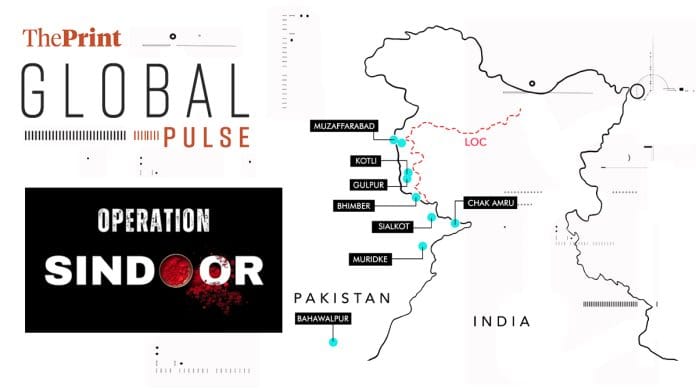New Delhi: Two weeks after the terrorist attack in Jammu and Kashmir’s Pahalgam, the Indian armed forces launched ‘Operation Sindoor’—a series of precision air strikes targeting nine locations across Pakistan and Pakistan-occupied Jammu and Kashmir in the early hours of Wednesday. International media analyses the fall out, and what could come next.
The Economist reports the series of events leading up to the incident, which include Pakistan defence minister calling a clash “inevitable”. With the announcement of the mock drill, India, too, was preparing for a confrontation.
“A feature of the strikes is that everything else appears to have been calibrated to minimise the risk of a full-scale war,” says the magazine.
“Pakistan claimed that India hit a mosque near Bahawalpur, and that seven people were killed in the attacks including at least two children. But in a statement India said that its strikes were ‘focused, measured, and non-escalatory’.”
Operation Sindoor refers to the vermillion worn by married Hindu women on their foreheads. It’s a reference to the nature of the terror attack, where “many wives saw their husbands killed in front of them,” says a report by Salman Masood and Mujib Mashal in The New York Times.
It also takes note of US President Donald Trump’s reaction—he called the amping up a “shame”.
“The strikes by India on Wednesday are an intensification of the conflict. The Pakistani government earlier vowed to respond in kind to any Indian aggression, and both nations have the capacity to inflict tremendous damage,” reads The Times report.
By and large, international news outlets are forecasting the fallout.
“You open a Pandora’s box,” Ashley Tellis, an Asian geopolitical expert at the Carnegie Endowment for peace tells Shan li and Waqar Gillani of The Wall Street Journal.
He isn’t the only one.
“Short of war, this is the worst stage for two countries,” Hussan Haqqani, former Pakistan ambassador to the US tells WSJ.
“India’s military is stretched because many soldiers are deployed at the disputed border with China following a 2020 clash, analysts said. China is a close ally of Pakistan and its top weapons provider,” it says.
The Washington Post brings a perspective from the other side of the border, where Pakistan citizens woke to sounds of “loud blasts”.
“The entire staff has been called in, doctors, nurses and ward boys. I’m scared for us,” 45-year-old Farhad Wayeed tells Shaiq Hussain, Shams Irfan, Karishma Mehrotra, John Hudson and Maham Javaid in The Post.
“This level of attack significantly ratchets up tensions between the two countries—and could be tantamount to a declaration of war. India claims to have not hit any Pakistani military targets and framed attacks as “non-escalatory”, but Pakistan’s response will guide the next phase of this altercation,” analyst Sushant Singh warns in The Post.
Following the strike, the Pakistan government is also readying a response, reports The Financial Times.
“Pakistan’s leader has called a national security committee meeting for Wednesday morning. Pakistan has closed its airspace and shut schools in the part of Kashmir it administers, in the capital Islamabad, and throughout Punjab, a province of more than 120 mn people,” report John Reed, Krishn Kaushik and Humza Kilani.
(Edited by Zinnia Ray Chaudhuri)






